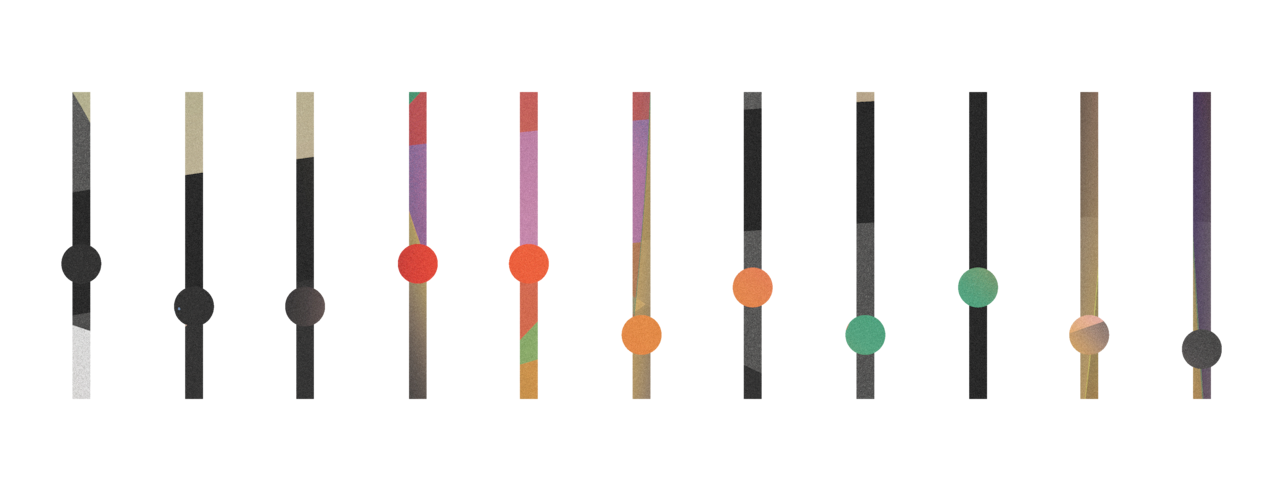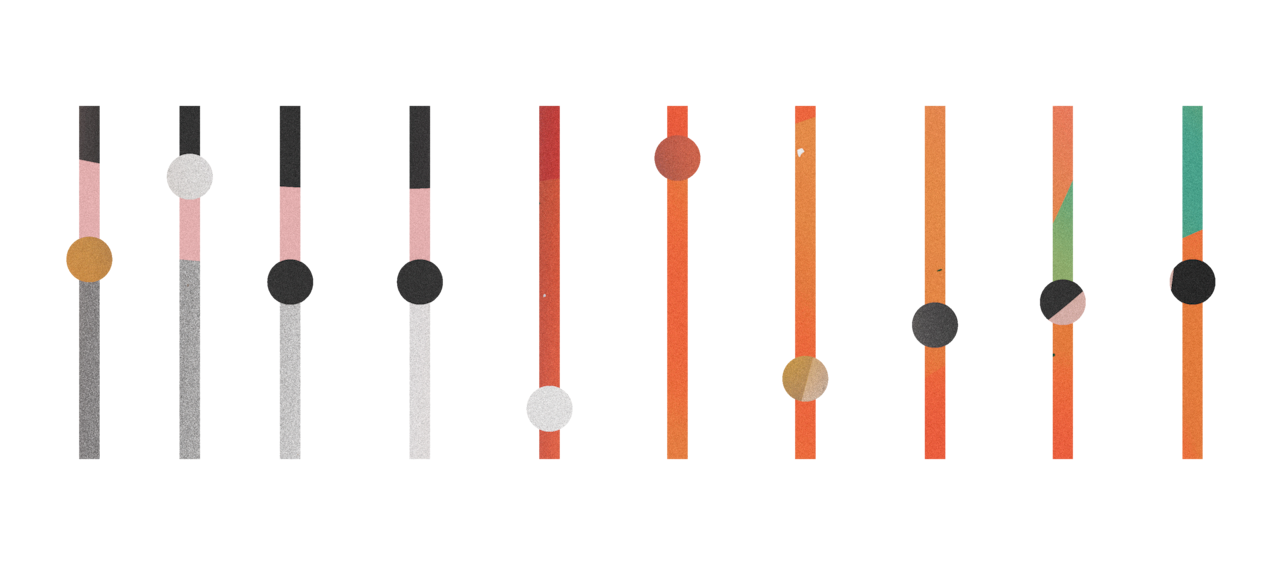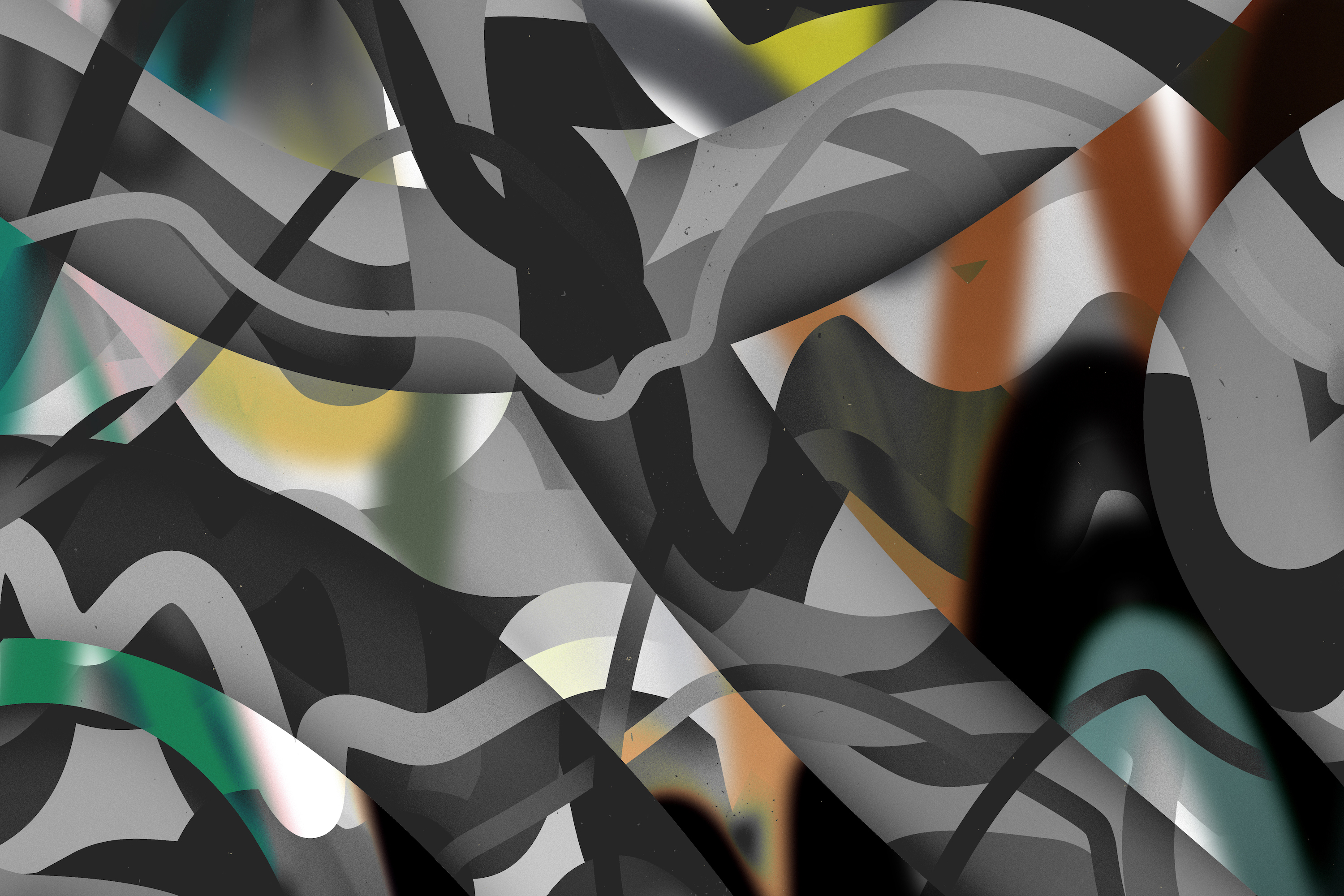Devotion: The Transcendence Orchestra’s Modern Methods for Ancient Rituals
Emma Warren reflects on the fundamental human need for transcendence in an interview with Anthony Child and Daniel Bean

A small music venue has gone pitch black. Then, there is light: three candles on a trestle table and one soft red beam. Three figures in striped hooded robes organise themselves. It begins.
Under one of the hoods you’ll find Anthony Child, AKA Surgeon, the British techno innovator whose minimal bangers more recently evolved into spiritually-inclined synthesiser music and devotional drone. The figure to his right is Bleep43’s Daniel Bean, and towards the back is Paddy Shine, from anarchic Manchester band Gnod. The trio is performing as the Transcendence Orchestra, and if you weren’t clear about their intentions already, the title of their first release, Modern Methods for Ancient Rituals, should clarify things.
It appears that, for Surgeon at least, two decades of clubs, record shops and studio time have been stripped down and extended out into a realm that deals explicitly with alteration. “There’s a core level I see all these things operating on, in terms of changing the state of mind and the consciousness of the audience. An important part of that is stripping it back to real fundamentals – tones and vibrations.”
“It’s really about using music to change, to alter people’s consciousness,” he adds. “What we do is a way of stripping it back to a fundamental essence. When it all comes together it can be very powerful.”
Devotional music comes in many shades. Some couldn’t be more explicitly religious, shifting the air immediately from the secular to the sacred, like the gorgeous Sufi exultations of Abida Parveen or Catholic Gregorian chants. Other forms deal in the idea that music can transmute and that sound itself can bring a believer closer to their deities, as with the batá drums in Santeria tambor ceremonies. Some styles are a step removed from their faith origins, but both their singers and what’s sung retains devotional DNA: the creative waves of R&B and soul that emanated from gospel and the black American church, for example. Some devotional music, like Zimbabwe’s Mbira, acts as a cloak to protect precious aspects of life and culture from rampaging colonialism. In short, music and faith come in as many different shapes as humans do.
And then there’s music that recognises a human ability to generate deities and systems of veneration, and which removes sound from dogma or faith. Music of this shade creates sounds and settings that bring people together in a shared culture, with regular gatherings and transportive sounds presented in a setting that’s out of the ordinary. Enter nightclubs, soundsystems, experimental drone and any number of artists playing with music’s transcendental qualities.
Enter, the Transcendence Orchestra.

Which other artists used devotional music in a way that appeals to you both?
Anthony Child
Daniel Bean
She was a highly religious person and that passion comes across in the music. She really loves God. It consumes her. It feels like she’s a breath away from religious ecstasy in her music. She touches on all these different sources – jazz or the church or Indian devotional music. She takes all the things and bends them to her will to praise God. It’s really powerful. You can hear it throughout her work. You can’t help be touched by it when you hear someone do it so well and so powerfully.
Are either of you religious or of faith?
Anthony Child
Not in any conventional sense, no.
Daniel Bean
I’m not sure I want to go into too much detail, but what I’d say is that I’ve experienced and understand communal devotional rituals. I understood that can put you into a trance from a very young age.
Any other devotional source material in the Transcendence Orchestra?
Daniel Bean
There’s one album we both owned by a santoor player called Shivkumar Sharma. By chance we both happened to have picked up the same album. Shivkumar Sharma was really prolific – he made over 30 albums – but we happen to have the same one, Hypnotic Santoor. It was really obviously music for transcendence. We’ve both been tuned into that music. There’s that element to techno which is in both our backgrounds. That’s transcendence music, or can be in the right hands.
In whose hands is techno transcendent?
Daniel Bean
People who care.
Who cares?
Anthony Child
It can be transcendent when Jeff Mills performs it, for me.
Daniel Bean
I’d agree.
Anthony Child
He’s one of the very few where it transcends the norm.
The symbols and symbolism we use – robes, incense, candles, darkness – sets up a certain state of mind even before we’ve started performing.
Your music as the Transcendence Orchestra deals in drones, tones and vibrations. Are some tones and vibrations more transcendent than others?
Anthony Child
I think the intervals is what’s important, the space between the different sounds and the different textures of those sounds and the way you get people to focus in. I think it’s a fundamental human trait to want to compare A to B. If you get people to focus in on a few tones, then it has a very hypnotic effect.
Daniel Bean
Everyone has their own transcendent tones. I really like very low frequencies. If you have things that change very slowly and go in and out of dissonance that also helps. I don’t think there’s a particular frequency, like 440 Hz. It’s the combination of things, especially if there’s an element of that combination that sounds odd or wrong in some way. That really draws people in. It asks a question, then you can answer that question in different ways. People understand you’ve set up a question and when you answer it, it allows some kind of release.
Anthony Child
We’re talking about this on quite a technical level, and I think when Dan, myself and Paddy [Shine of Manchester band Gnod] are performing, I’m not thinking. I’m not operating on a mentally technical level. It’s really about opening myself up, going beyond the boundaries of myself, and that’s the only way I can describe it.
Daniel Bean
You’re letting the sound decide.
Anthony Child
There’s a sense of giving up control, giving yourself over to the sound, to the three of us in the room and the audience, and it’s all part of it.


You two made the album but now you’re three people. What is Paddy from Gnod’s input?
Daniel Bean
It’s just the same as me or Tony. We’ve all three got quite a good understanding of this state we’re trying to induce and he’s a really skilled improvisor. Someone described it once as “virtuosity of the ear.” Being really, really good at listening, which is really crucial for what we do.
You’ve talked about having Transcendence Orchestra rituals. How did you decide what these should be?
Daniel Bean
It grew partly through discussion. It felt like we were looking for maps or diagrams from elsewhere. Lost space diagrams. These things on the edge of our consciousness that we might be able to tap into. How might we invoke that feeling.
What does having some paraphernalia add to it all? Does it make people listen in a certain way?
Daniel Bean
It’s partly about permission. If you’re in the audience, you’re waiting for a sign to say it’s okay to get really into this, or to lose yourself. It doesn’t have to be really obvious or intense or strongly visual, just a little thing that tells you this is different, this is not the usual state of affairs.
Everyone should have a way of transcending. This is just the way we like it.
Anthony Child
The symbols and symbolism we use – robes, incense, candles, darkness – sets up a certain state of mind even before we’ve started performing. I think that’s powerful. It sets up a certain expectation. That can make the music have a much more powerful effect.
Were there any particular events or performers who fed into the idea of what you wanted to do with the Orchestra, live-wise?
Anthony Child
One time I stayed at Dan’s house while I was in London. He had a harmonium and a shruti box and we were just messing around with them. We played very simple and very repetitive chords and notes on them, and I was really taken aback at how powerful they were. That was the genesis of the project.
How do modular synths play into the devotional bit of what you’re doing? You used a Buchla Music Easel to make this music.
Anthony Child
I don’t get too caught up in romanticising synthesisers, but if there is one I have special feelings about it’d be the Buchla. There is something about it, some sense of it being a living organism, more than any other synthesiser I’d ever used. I have a very pragmatic side. These things are a tool for expression, but there is a sense that it’s some kind of living entity.
Why?
Anthony Child
I find that really hard to explain. It’s something I wouldn’t have believed before I worked with one.

Both of you have seen people responding to music in a devotional way across your musical careers. I wondered what you had to say about how easily people get into a transcendent state – and how much people want it?
Daniel Bean
Everyone wants it. They don’t admit it, necessarily, but it’s a fundamental human need, a desire. I think it’s actually harmful to not have something that allows you to do it. Everyone should have a way of transcending. This is just the way we like it. It’s not for everyone, but everyone should have an opportunity to transcend in some way.
How easy is it for people to get into that state, do you think?
Daniel Bean
People do get into that state. People tell us, they come and talk to us afterwards. They say we really messed with their heads. How easy is it for people to get there? You just have to let people know they’re in a different place, and that it’s okay to think and feel and act a bit differently to usual. It’s been quite easy to take people along with us.
What’s the connection with 1980s British snooker star Steve Davis, who was photographed at your show in December?
Anthony Child
He’s a music fan. He’s quite a fan of transcendence, I suppose.
Illustrations by Ben Clark

